The story behind JHL Constructors’ president and CEO is more the exception than the norm for a general contractor these days: Ben Stellor has worked at just one company—JHL—for his entire career.
Founded in 1987 by John Hachmeister, who died in 2017, JHL is now in its second generation of employee-owned leaders, working to follow the relationship-focused drive of the company’s founder while growing into new sectors. That strategy has led JHL to earn $246 million in regional revenue in 2021, up from $216 million in 2020, while retaining longtime clients and forming new partnerships.
“Relationships can be a sound bite,” Stellor says. “We truly put relationships above profitability, and our brand promise is doing the right thing, always. That comes from the founding principles from John. We truly believe reputation is No. 1 in this business, and that is the reason you see so much business with long-term, repeat clients.”
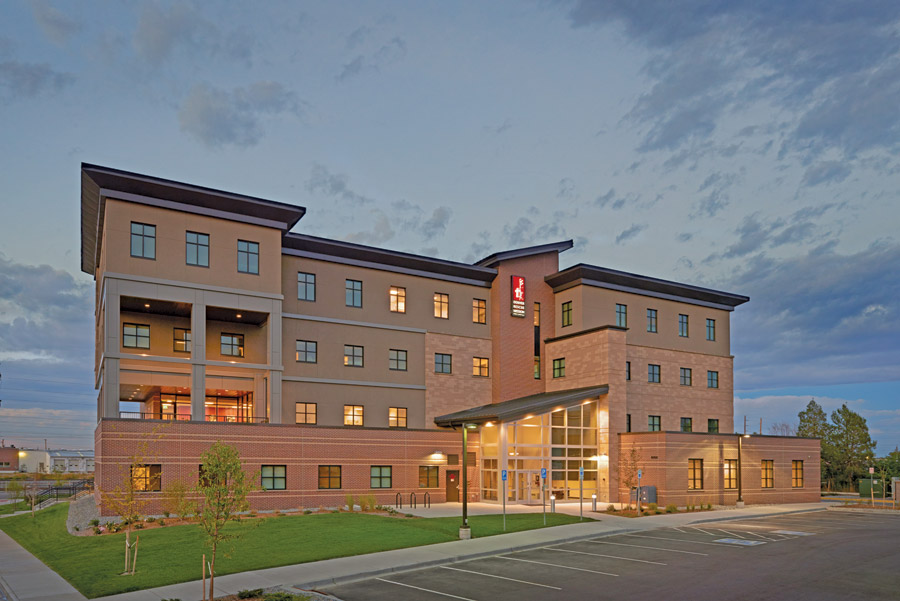
The Denver Rescue Mission’s administrative building was a JHL creation that followed previous work between JHL and the mission.
Photo courtesy of JHL Constructors
Relationship Building
About 80% of JHL’s work comes from repeat clients.
Brad Meuli, CEO of the Denver Rescue Mission, has worked with JHL for nearly two decades, originally selecting the company for two renovations worth about $10 million. “I just have to have somebody I know I can trust,” Meuli says about that first decision. “They did those two projects for us and have been doing [our] projects ever since.”
Michael Hall, an owner’s rep with Anser Advisory, has worked with JHL since the early 1990s and still remembers constructing their first elementary school project together. Now more than 20 K-12 projects later, Hall says he remains impressed.
“They are transparent. We as owner’s reps really dislike hidden profit centers, and it is easy for contractors to hide dollars,” he says. “Our business is built around schedules and budgets, and their preconstruction effort is by far one of the leading [ones] in the state. It comes from being transparent, and it comes from having principal involvement. They don’t just have the project executive sell a job and walk away; they are with the project till the end.”
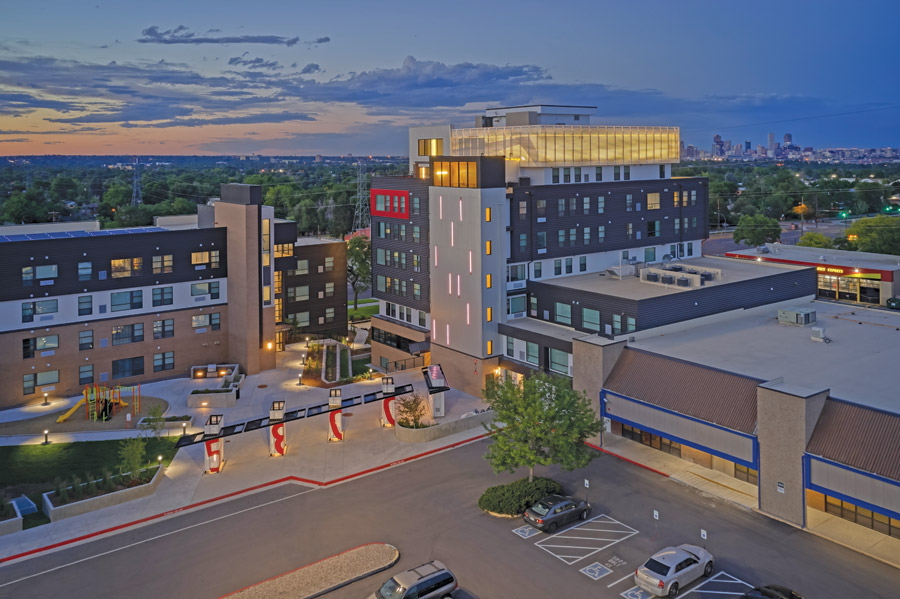
The Fifty Eight Hundred multifamily community in Lakewood, Colo., is an award-winning affordable housing project.
Photo courtesy of JHL Constructors
A 100% Colorado-based business, JHL self-performs much of its work, from structural concrete and earthwork to utilities and carpentry.
Stellor says the firm’s culture of serving clients extends to its 260 employees. “Construction is a difficult business, and we believe to attract and retain the best, we have to focus on more than just the work environment,” he says. “We want to make sure people are rewarded accordingly for their efforts.”
To fulfill that goal, JHL employs a full-time director of culture and creates opportunities for employees to share in the financial success of big projects. “We spend a lot of time and money on walking the walk,” Stellor says. “If we take care of our people and make sure we are in tune with them personally and support them, they turn around and take exceptional care of long-term client relationships.”

JHL’s recent infrastructure work includes the Washington Bridge replacement project for the Colorado Dept. of Transportation.
Photo courtesy of JHL Constructors
Diversification
When Hachmeister started JHL, he focused mostly on K-12 projects. Eight years ago, Stellor worked with Robert Wahl, now the firm’s vice president in charge of civil and infrastructure work, to start a civil division from scratch.
“We started with a very small infrastructure project, and it has basically grown from there,” Wahl says. Now JHL works in water, mining, land development and transportation, handling multiple aspects in each of those sectors. “We decided early on we didn’t want to necessarily focus right on transportation, we wanted to broadly focus on those four market segments.”
Wahl says the firm knew there might be risk in having so many segments, but that diversification has proven valuable to the organization in winning a variety of jobs and attracting a mix of talent.
“We spend a lot of time and money on walking the walk.”
—Ben Stellor, President & CEO, JHL Constructors
“Our ability to grow,” Wahl says, “is strictly our ability to attract and grow great talent.”
In the early days of diversification, when JHL was still known mostly for its K-12 portfolio, Wahl says the firm chased work to prove its broader expertise. “Our reputation is growing, and we are getting out there,’ he says. “It is fun; we are having a great time.”
With a leadership team of four, all in their low-40s, Wahl says they have a motivated group eager to see JHL continue to expand.
While the firm is now about a 60-40 split between what it calls its vertical work (buildings) and horizontal work (civil), Stellor says leaders are careful not to silo the two and embrace the market diversification unique for a regional company of JHL’s size. “The multifaceted nature of our company means we are able to serve clients in multiple markets,” he says. “That is very attractive to building and maintaining long-term relationships.”
On the civil side, JHL’s projects include a $30-million mine project, a $53-million water and sanitation project, an $80-million industrial development and a $40-million Port of Colorado project. Those projects, along with continued education work across the state, help JHL maintain its growth in multiple sectors while staying laser focused on each client’s goals.
“These guys are generous to a fault,” Meuli says. “They have been wonderful to us at the Denver Rescue Mission, which means they have been wonderful to the homeless and those in need.”

The Aurora Highlands Tributary & CMaR project features more than 200 acres of civil work and the stabilization of a primary tributary.
Photo courtesy of JHL Constructors
Employee Benefits
Project manager Diego Rodriguez has worked at JHL since graduating from Colorado Mesa University. His first job for the contractor was serving as project engineer for a 2017 school project. He says he has been “coached and mentored” to be ready for his current position of project manager.
“It is evident that our leadership team prioritizes employees and continues to invest in them and their career goals year after year,” Rodriguez says. “I’ve seen it reflected in my personal career, and I feel I’ve identified with other peers where I’ve gotten the opportunity to share their success. Work can be challenging from time to time, but the people in JHL make the work environment very enjoyable.”
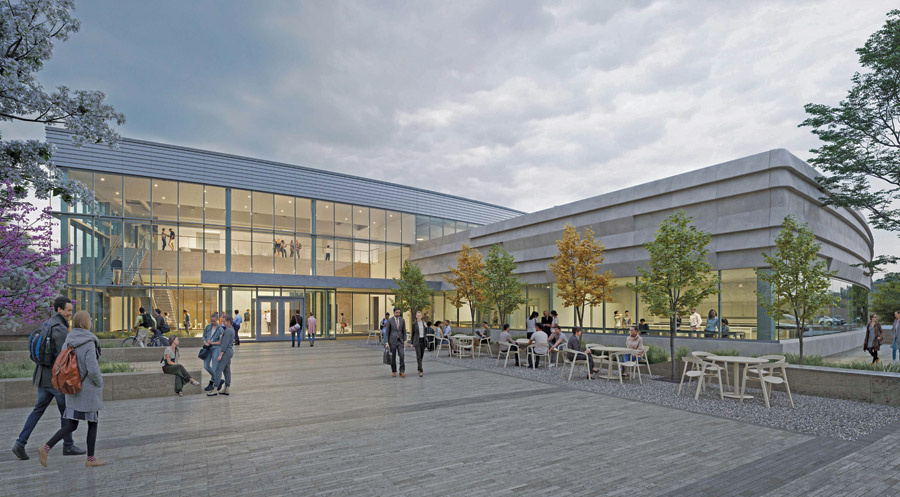
The Parker Water & Sanitation District’s new headquarters building will be complete in 2023.
Photo courtesy of JHL Constructors
Hall says that in an industry with wages competitive across firms, people gravitate toward JHL because of the benefits of a work-life balance. “They work those guys hard,” he says, “but give them opportunities to take a Friday afternoon off and encourage them to take vacation. In the school business we do ‘summer wonders,’ and firms don’t allow people to take a vacation in summers. That is not how JHL works. They treat their craft workers with a tremendous amount of respect.”
Stellor says JHL plans to “grow at the ability and desire of our people.” While not a revenue-driven company, the firm also isn’t a revenue-limited company. “Growth has been fairly organic with diversification and delivering on our commitments leading to the next opportunity,” he says. “We are trying to maintain sustainable growth and serve our clients the best we possibly can.”



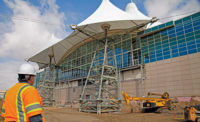

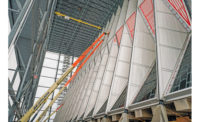
Post a comment to this article
Report Abusive Comment